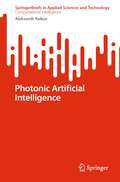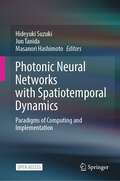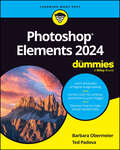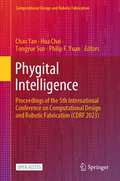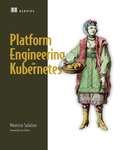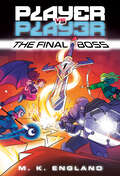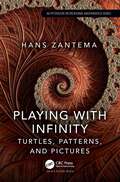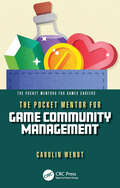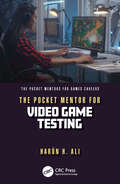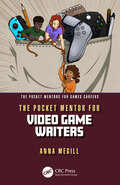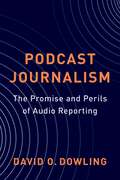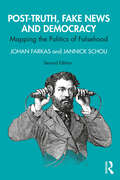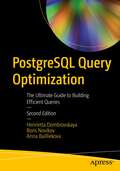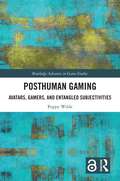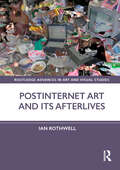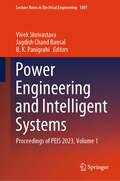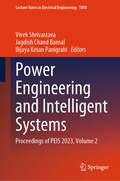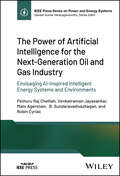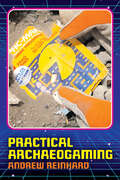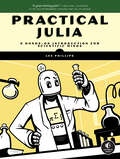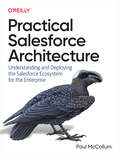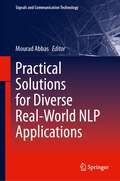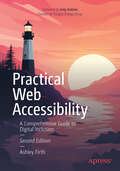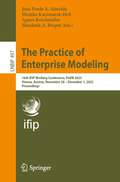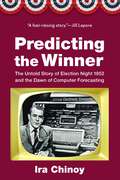- Table View
- List View
Photonic Artificial Intelligence (SpringerBriefs in Applied Sciences and Technology)
by Aleksandr RaikovThis book addresses an attempt to create Photonic Artificial Intelligence (PAI) system based on optical technologies, which process signals continuously. PAI could help to overcome digital computer limits and almost zero out the machine learning time and AI inference. It helps to consider feelings, the chaos of thoughts, cognitive activity, and the transcendental states of the human mind in AI systems. The book also discusses new problems such as synthesizing new photonic materials, creating optical control systems, and connecting PAI systems with outside digital computers and holographic memory. The book is aimed at a wide range of readers, including postgraduates and researchers, interested in advanced AI by creating its new paradigm, which can help to overcome traps of traditional AI development.
Photonic Neural Networks with Spatiotemporal Dynamics: Paradigms of Computing and Implementation
by Hideyuki Suzuki Jun Tanida Masanori HashimotoThis open access book presents an overview of recent advances in photonic neural networks with spatiotemporal dynamics. The computing and implementation paradigms presented in this book are outcomes of interdisciplinary studies by collaborative researchers from the three fields of nonlinear mathematical science, information photonics, and integrated systems engineering. This book offers novel multidisciplinary viewpoints on photonic neural networks, illustrating recent advances in three types of computing methodologies: fluorescence energy transfer computing, spatial-photonic spin system, and photonic reservoir computing. The book consists of four parts: Part I introduces the backgrounds of optical computing and neural network dynamics; Part II presents fluorescence energy transfer computing, a novel computing technology based on nanoscale networks of fluorescent particles; Parts III and IV review the models and implementation of spatial-photonic spin systems and photonic reservoir computing, respectively. These contents are beneficial to researchers in a broad range of fields, including information science, mathematical science, applied physics, and engineering, to better understand the novel computing concepts of photonic neural networks with spatiotemporal dynamics.
Photoshop Elements 2024 For Dummies
by Barbara Obermeier Ted PadovaGet in touch with your creative side using Photoshop Elements Photoshop Elements 2024 For Dummies covers the newest version of Adobe’s beginner-friendly photo editing software. With the help of this Dummies guide, you’ll discover the ins and outs of Photoshop Elements, so you can transform your images from ordinary to extraordinary. The software is packed with all the photo editing tools you need to turn your images into showstoppers. With the help of the easy-to-understand instructions in this book, you’ll learn how to use the editing tools, utilize layers, make one-click fixes, brighten colors, add filters, and beyond. Get started with Photoshop Elements and make basic edits in quick mode Create different views of an image and use the history panel to find the best version of your image Replace backgrounds, merge photos, and do other neat editing tricks Understand camera raw to turn your camera’s image data into a stunning photo This bestselling Dummies guide is the book you need to get started with Elements and learn the insider tips that will give your images that “wow factor.”
Phygital Intelligence: Proceedings of the 5th International Conference on Computational Design and Robotic Fabrication (CDRF 2023) (Computational Design and Robotic Fabrication)
by Chao Yan Hua Chai Tongyue Sun Philip F. YuanThis open access book is a compilation of selected papers from 2023 DigitalFUTURES — The 5nd International Conference on Computational Design and Robotic Fabrication (CDRF 2023). The work focuses on novel techniques for computational design and robotic fabrication. The contents make valuable contributions to academic researchers, designers, and engineers in the industry. As well, readers will encounter new ideas about understanding intelligence in architecture.
Platform Engineering on Kubernetes
by Mauricio SalatinoEmpower your team with platforms built on top of Kubernetes using open source tools.Adopting Kubernetes is complex—especially when you&’re working in an organization with multiple teams, deploying to multiple cloud providers, and working with different stacks. Platform Engineering on Kubernetes shows you how to solve these common cloud native problems with open-source tools and emerging best practices from the Kubernetes community. In Platform Engineering on Kubernetes you will learn about: The principles behind platform engineering and how these apply to Kubernetes Evaluating and adopting open-source projects to build domain specific platforms Creating Platform APIs to enable teams to release more software more efficiently Reducing the cognitive load of a platform for your teams Measuring your platform initiatives using established software delivery metrics Package, version, distribute, and deploy with Helm, Tekton, Dagger and Argo CD Implement a multi-cloud infrastructure strategy using Crossplane Progressive upgrades with Knative Serving and Argo Rollouts Enable development teams with standard application-level APIs with Dapr A platform helps your team stay focused on delivering amazing software. But building a reliable platform on top of Kubernetes demands real expertise. Platform Engineering on Kubernetes reveals how to combine multiple popular open-source projects into a custom platform that works for your applications and your teams. It&’s the perfect guide for your organization&’s journey to Kubernetes, simplifying cloud native development for your dev teams and helping them deliver software faster. Foreword by Jared Watts. About the technology Kubernetes is an amazing orchestration tool, but it&’s just the start of your journey to the cloud. To efficiently deliver cloud-native software, your team needs a solid build pipeline, an efficient package manager and distribution mechanism, and APIs that reduce your team&’s cognitive load. This book will show you how to build custom platforms on top of Kubernetes—all with open-source tools such as Dapr, Knative, Argo CD and Rollouts, and Tekton. About the book Platform Engineering on Kubernetes starts by clearly defining the elements of a great Kubernetes-based platform. Then, it systematically introduces the tools you&’ll need to build a platform that exactly matches your organization&’s requirements. Hands-on examples and detailed code guide you through each step. By the end, you&’ll be able to create a complete platform to efficiently deliver cloud-native software without being tied to a specific cloud provider or vendor. About the reader For developers and software architects familiar with the basics of containers and Kubernetes. About the author Mauricio Salatino is currently a Dapr OSS Contributor, a Knative Steering Committee member, and co-lead of the Knative Functions working group. Table of Contents 1 (The rise of) platforms on top of Kubernetes 2 Cloud-native application challenges 3 Service pipelines: Building cloud-native applications 4 Environment pipelines: Deploying cloud-native applications 5 Multi-cloud (app) infrastructure 6 Let&’s build a platform on top of Kubernetes 7 Platform capabilities I: Shared application concerns 8 Platform capabilities II: Enabling teams to experiment 9 Measuring your platforms
Player vs. Player #3: The Final Boss (Player vs. Player #3)
by M.K. EnglandIn the epic finale of this illustrated series, the best kid gamers in the world face their biggest battle yet, as they fight for their friend's freedom and all their gaming futures. Perfect for young fans of Ready Player One and Mr. Lemoncello's Library.Welcome to Affinity, the hottest battle royale video game around! The Weird Ones—Josh, Hannah, Larkin, and Wheatley—have become four of the biggest stars in gaming. But a surprising twist to their first professional Affinity tournament leaves Wheatley in huge trouble . . . with Hurricane Games, the company that made the game they all love.To save Wheatley, Hurricane offers them a deal: win three near-impossible challenges and Wheatley will be free. But if they lose, the kids will be banned from Affinity for life . . . and they&’ll never see Wheatley again.With their futures on the line, The Weird Ones will have to play the best they ever have. But is winning even possible when your opponent literally controls the game?
Playing with Infinity: Turtles, Patterns, and Pictures (AK Peters/CRC Recreational Mathematics Series)
by Hans ZantemaThis is a book about infinity - specifically the infinity of numbers and sequences. Amazing properties arise, for instance, some kinds of infinity are argued to be greater than others. Along the way the author will demonstrate how infinity can be made to create beautiful ‘art’, guided by the development of underlying mathematics. This book will provide a fascinating read for anyone interested in number theory, infinity, math art, and/or generative art, and could be used a valuable supplement to any course on these topics.Features: Beautiful examples of generative art Accessible to anyone with a reasonable high school level of mathematics Full of challenges and puzzles to engage readers
The Pocket Mentor for Game Community Management (The Pocket Mentors for Games Careers)
by Carolin WendtWant to work in community management in the games industry? Then this is the book for you. Filled with practical advice and real-world examples, this guide offers a comprehensive introduction to building and nurturing vibrant gaming communities, fostering engagement, and handling challenges along the way. This book covers everything from the education you’ll need, how to look for and apply for job opportunities, and the studio interview process itself. It also includes tips and advice for what to do once you’re in the role, with chapters covering strategy, project management, accessibility, and dealing with trolls and toxicity. This book features insights from interviews with dozens of community managers, distilling their expertise into actionable advice. Drawing from recent job listings and seasoned community professionals’ experiences, it offers a comprehensive skill set that reflects the dynamic demands of community jobs in the gaming industry. This book will be of great interest to all beginner and aspiring games community managers.
The Pocket Mentor for Video Game Testing (The Pocket Mentors for Games Careers)
by Harun H. AliWant to work as a games tester in the video games industry? Then this is the book for you. This book provides all the essential information and guidance you need to understand the industry and get your foot in the door. This book covers everything, from the education you’ll need, how to look for and apply for job opportunities, and the studio interview process itself. It also includes advice for what to do once you’re in the role, with chapters covering how to write a bug report and creating test plans, as well as interviews with top tips from experts in the industry. This book will be of great interest for all beginner and aspiring games QA testers looking to build their career.
The Pocket Mentor for Video Game Writers (The Pocket Mentors for Games Careers)
by Anna MegillWant to become a writer in the games industry? Then this is the book is for you. Award-winning game writer Anna Megill provides all the essential information and guidance you need to understand the industry and get your foot on the ladder. The book explains in simple, clear language exactly what a beginner needs to know about education requirements, finding job opportunities, applying for roles, and acing studio interviews. Professional writers will learn how to run a writers’ room, manage a team, create documentation for various project phases, and navigate studio politics. The Pocket Mentor is designed to be a just-the-facts companion to The Game Writing Guide: Get Your Dream Job and Keep It, but it stands on its own as an invaluable go-anywhere resource for beginners and seasoned pros alike.
Podcast Journalism: The Promise and Perils of Audio Reporting
by David DowlingPodcasting’s stratospheric rise has inspired a new breed of audio reporting. Offering immersive storytelling for a binge-listening audience as well as reaching previously underserved communities, podcasts have become journalism’s most rapidly growing digital genre, buoying a beleaguered news industry. Yet many concerns have been raised about this new medium, such as the potential for disinformation, the influence of sponsors on content, the dominance of a few publishers and platforms, and at-times questionable adherence to journalistic principles.David O. Dowling critically examines how podcasting and its evolving conventions are transforming reporting—and even reshaping journalism’s core functions and identity. He considers podcast reporting’s most influential achievements as well as its most consequential ethical and journalistic shortcomings, emphasizing the reciprocal influences between podcasting and traditional and digital journalism. Podcasting, both as a medium and a business, has benefited from the blurring of boundaries separating news from entertainment, editorial from advertising, and neutrality from subjectivity. The same qualities and forces that have allowed podcasting to bypass the limitations of traditional categories, expand the space of social and political discourse, and provide openings for marginalized voices have also permitted corporations to extend their reach and far-right firebrands to increase their influence. Equally attentive to the medium’s strengths and flaws, this is a vital book for all readers interested in how podcasting has changed journalism.
Post-Truth, Fake News and Democracy: Mapping the Politics of Falsehood (Routledge Studies In Global Information, Politics And Society Ser.)
by Johan Farkas Jannick SchouThe new edition of Post-Truth, Fake News and Democracy offers an updated overview and critical discussion of contemporary discourses around truth, misinformation, and democracy, while also mapping cutting-edge scholarship. Through in-depth analyses of news articles, commentaries, academic publications, policy briefs, and political speeches, the book engages with the underlying normative ideas that shape how fake news is being addressed across the globe. Doing so, it provides an innovative, critical contribution to contemporary debates on democracy, post-truth, and politics. Three new chapters: Chapter 2 provides an outline of the scholarly field of research into fake news; Chapter 5 examines how issues of fake news and (mis)information have become intertwined with contemporary crisis events; and Chapter 9 presents democratic alternatives to post-truth solutionism. A new foreword by Professor Sarah Banet-Weiser. Fully updated examples and studies from contemporary events, including the COVID-19 pandemic, the United States Capitol attack, and the Russian invasion of Ukraine. Extended discussions on the causes of democratic decline, currently proposed solutions to fake news, and democratic alternatives to our current predicament. Interesting, informative, and well documented, Post-Truth, Fake News and Democracy continues its commitment to understand and engage with the current state and future of democracy.
PostgreSQL Query Optimization: The Ultimate Guide to Building Efficient Queries
by Henrietta Dombrovskaya Boris Novikov Anna BailliekovaWrite optimized queries. This book helps you write queries that perform fast and deliver results on time. You will learn that query optimization is not a dark art practiced by a small, secretive cabal of sorcerers. Any motivated professional can learn to write efficient queries from the get-go and capably optimize existing queries. You will learn to look at the process of writing a query from the database engine’s point of view, and know how to think like the database optimizer. The book begins with a discussion of what a performant system is and progresses to measuring performance and setting performance goals. It introduces different classes of queries and optimization techniques suitable to each, such as the use of indexes and specific join algorithms. You will learn to read and understand query execution plans along with techniques for influencing those plans for better performance. The book also covers advanced topics such as the use of functions and procedures, dynamic SQL, and generated queries. All of these techniques are then used together to produce performant applications, avoiding the pitfalls of object-relational mappers.This second edition includes new examples using Postgres 15 and the newest version of the PostgresAir database. It includes additional details and clarifications about advanced topics, and covers configuration parameters in greater depth. Finally, it makes use of advancements in NORM, using automatically generated functions. What You Will LearnIdentify optimization goals in OLTP and OLAP systemsRead and understand PostgreSQL execution plansDistinguish between short queries and long queriesChoose the right optimization technique for each query typeIdentify indexes that will improve query performanceOptimize full table scansAvoid the pitfalls of object-relational mapping systemsOptimize the entire application rather than just database queries Who This Book Is ForIT professionals working in PostgreSQL who want to develop performant and scalable applications, anyone whose job title contains the words “database developer” or “database administrator" or who is a backend developer charged with programming database calls, and system architects involved in the overall design of application systems running against a PostgreSQL database
Posthuman Gaming: Avatars, Gamers, and Entangled Subjectivities (Routledge Advances in Game Studies)
by Poppy WildePosthuman Gaming: Avatars, Gamers, and Entangled Subjectivities explores the relationship between avatar and gamer in the massively multiplayer online roleplaying game World of Warcraft, to examine notions of entangled subjectivity, affects and embodiments – what it means and how it feels to be posthuman. With a focus on posthuman subjectivity, Wilde considers how we can begin to articulate ourselves when the boundary between self and other is unclear. Drawing on fieldnotes of her own gameplay experiences, the author analyses how subjectivity is formed in ways that defy a single individual notion of "self", and explores how different practices, feelings, and societal understandings can disrupt strict binaries and emphasise our posthumanism. She interrogates if one can speak of an "I" in the face of posthuman multiplicity, before exploring different analytical themes, beginning with how acting theories might be posthumanised and articulate the relationship between avatar and gamer. She then defines posthuman empathy and explains how this is experienced in gaming, before addressing the need to account for boredom, the complexity of nostalgia, and ways death and loss are experienced through gaming. This volume will appeal to a broad audience and is particularly relevant to scholars and students of cultural studies, media studies, humanities, and game studies. Chapters 2 and 7 of this book are freely available as a downloadable Open Access PDF at http://www.taylorfrancis.com under a Creative Commons Attribution-Non Commercial-No Derivatives (CC-BY-NC-ND) 4.0 license.
Postinternet Art and Its Afterlives (Routledge Advances in Art and Visual Studies)
by Ian RothwellFocusing on the ‘postinternet’ art of the 2010s, this volume explores the widespread impact of recent internet culture on the formal and conceptual concerns of contemporary art. The ‘postinternet’ art movement is splintered and loosely defined, both in terms of its form and its politics, and has come under significant critique for this reason. This study will provide this definition, offering a much-needed critical context for this period of artistic activity that has had and is still having a major impact on contemporary culture. The book presents a picture of what the art and culture made within and against the constraints of the online experience look, sound, and feel like. It includes works by Petra Cortright, Jon Rafman, Jordan Wolfson, DIS, Amalia Ulman, and Thomas Ruff, and presents new analyses of case studies drawn from the online worlds of the 2010s, including vaporwave, anonymous image board culture, ‘irony bros’ and ‘edgelords’, viral extreme sports stunts, and GIFs. The book will be of interest to scholars working in art history, contemporary art, and digital culture.
Power Engineering and Intelligent Systems: Proceedings of PEIS 2023, Volume 1 (Lecture Notes in Electrical Engineering #1097)
by Vivek Shrivastava Jagdish Chand Bansal B. K. PanigrahiThe book presents a collection of the high-quality research articles in the field of power engineering, grid integration, energy management, soft computing, artificial intelligence, signal and image processing, data science techniques, and their real-world applications. The papers are presented at International Conference on Power Engineering and Intelligent Systems (PEIS 2023), held during June 24–25, 2023, at National Institute of Technology Delhi, India.
Power Engineering and Intelligent Systems: Proceedings of PEIS 2023, Volume 2 (Lecture Notes in Electrical Engineering #1098)
by Vivek Shrivastava Jagdish Chand Bansal Bijaya Ketan PanigrahiThe book presents a collection of the high-quality research articles in the field of power engineering, grid integration, energy management, soft computing, artificial intelligence, signal and image processing, data science techniques, and their real-world applications. The papers are presented at International Conference on Power Engineering and Intelligent Systems (PEIS 2023), held during June 24 – –25, 2023, at National Institute of Technology, Delhi, India.
The Power of Artificial Intelligence for the Next-Generation Oil and Gas Industry: Envisaging AI-inspired Intelligent Energy Systems and Environments (IEEE Press Series on Power and Energy Systems)
by Pethuru Raj Chelliah Venkatraman Jayasankar Mats Agerstam B. Sundaravadivazhagan Robin CyriacThe Power of Artificial Intelligence for the Next-Generation Oil and Gas Industry Comprehensive resource describing how operations, outputs, and offerings of the oil and gas industry can improve via advancements in AI The Power of Artificial Intelligence for the Next-Generation Oil and Gas Industry describes the proven and promising digital technologies and tools available to empower the oil and gas industry to be future-ready. It shows how the widely reported limitations of the oil and gas industry are being nullified through the application of breakthrough digital technologies and how the convergence of digital technologies helps create new possibilities and opportunities to take this industry to its next level. The text demonstrates how scores of proven digital technologies, especially in AI, are useful in elegantly fulfilling complicated requirements such as process optimization, automation and orchestration, real-time data analytics, productivity improvement, employee safety, predictive maintenance, yield prediction, and accurate asset management for the oil and gas industry. The text differentiates and delivers sophisticated use cases for the various stakeholders, providing easy-to-understand information to accurately utilize proven technologies towards achieving real and sustainable industry transformation. The Power of Artificial Intelligence for the Next-Generation Oil and Gas Industry includes information on: How various machine and deep learning (ML/DL) algorithms, the prime modules of AI, empower AI systems to deliver on their promises and potential Key use cases of computer vision (CV) and natural language processing (NLP) as they relate to the oil and gas industry Smart leverage of AI, the Industrial Internet of Things (IIoT), cyber physical systems, and 5G communication Event-driven architecture (EDA), microservices architecture (MSA), blockchain for data and device security, and digital twins Clearly expounding how the power of AI and other allied technologies can be meticulously leveraged by the oil and gas industry, The Power of Artificial Intelligence for the Next-Generation Oil and Gas Industry is an essential resource for students, scholars, IT professionals, and business leaders in many different intersecting fields.
Practical Archaeogaming
by Andrew ReinhardAs a sequel to Archaeogaming: an Introduction to Archaeology in and of Video Games, the author focuses on the practical and applied side of the discipline, collecting recent digital fieldwork together in one place for the first time to share new methods in treating interactive digital built environments as sites for archaeological investigation. Fully executed examples of practical and applied archaeogaming include the necessity of a rapid archaeology of digital built environments, the creation of a Harris matrix for software stratigraphy, the ethnographic work behind a human civilization trapped in an unstable digital landscape, how to conduct photogrammetry and GIS mapping in procedurally generated space, and how to transform digital artifacts into printed three-dimensional objects. Additionally, the results of the 2014 Atari excavation in Alamogordo, New Mexico are summarized for the first time.
Practical Julia: A Hands-On Introduction for Scientific Minds
by Lee PhillipsLearn to use Julia as a tool for research, and solve problems of genuine interest—like modeling the course of a pandemic—in this practical, hands-on introduction to the language.The Julia programming language is acclaimed in scientific circles for its unparalleled ease, interactivity, and speed. Practical Julia is a comprehensive introduction to the language, making it accessible even if you&’re new to programming.Dive in with a thorough guide to Julia&’s syntax, data types, and best practices, then transition to craft solutions for challenges in physics, statistics, biology, mathematics, scientific machine learning, and more. Whether you&’re solving computational problems, visualizing data, writing simulations, or developing specialized tools, Practical Julia will show you how.As you work through the book, you&’ll:• Use comprehensions and generators, higher-level functions, array initialization and manipulation, and perform operations on Unicode text• Create new syntax and generate code with metaprogramming and macros, and control the error system to manipulate program execution• Visualize everything from mathematical constructs and experimental designs to algorithm flowcharts• Elevate performance using Julia&’s unique type system with multiple dispatch• Delve into scientific packages tailored for diverse fields like fluid dynamics, agent-based modeling, and image processingWhether your interest is in scientific research, statistics, mathematics, or just the fun of programming with Julia, Practical Julia will have you writing high-performance code that can do real work in no time.Online Resources: Ready-to-run code samples, illustrations, and supplemental animations available at https://julia.lee-phillips.org.
Practical Salesforce Architecture: Understanding And Deploying The Salesforce Ecosystem For The Enterprise
by Paul McCollumOnce renowned as a customer relationship management tool, Salesforce has evolved into a cloud-first application and capability ecosystem. With dedicated components for tasks such as middleware, big data, reporting, ETL, data loading, and API orchestration, Salesforce has become more prevalent in modern architectures.This concise yet comprehensive guide provides an overview of Salesforce architecture for enterprise architects and Salesforce ecosystem architects. Author Paul McCollum, Salesforce Technical Architect at Accenture, provides a roadmap for integrating major elements of the Salesforce ecosystem with planned or existing enterprise architecture. You'll learn how to use these components to address the diverse needs of different organizations.Many companies today are adding or building multicloud capabilities and incorporating various elements from the Salesforce ecosystem. With this book, you'll learn:Strengths, weaknesses, and growth areas of Salesforce's enterprise architecture domain featuresHow Salesforce compares to other cloud providersMethods for using the Salesforce ecosystem effectively to address your organization's needsHow to integrate Salesforce with planned or existing enterprise architecturesWays to manage and forecast performance, complexity, and ease of operation across the Salesforce platform
Practical Solutions for Diverse Real-World NLP Applications (Signals and Communication Technology)
by Mourad AbbasThis book unveils the most advanced techniques and innovative applications in the natural language processing (NLP) field. It uncovers the secrets to enhancing language understanding, and presents practical solutions to different NLP tasks, as text augmentation, paraphrase generation, and restoring spaces and punctuation in multiple languages. It unlocks the potential of hierarchical multi-task learning for cross-lingual phoneme recognition, and allows readers to explore more real-world applications such as error correction, aggregating industrial security findings as well as predicting music emotion values from social media conversations. "Practical Solutions for Diverse Real-World NLP Applications" is the suitable guidebook for researchers, students, and practitioners as it paves the way for them by delivering invaluable insights and knowledge.
Practical Web Accessibility: A Comprehensive Guide to Digital Inclusion
by Ashley FirthEveryone deserves to use the Internet. An estimated 1.3 billion people experience significant disability. That’s 16percent of the world’s population, or one in six of us. At the same time, over 96 percent of the one million most popular websites have an accessibility issue. Add to this the massive rise in legal cases around sites not being accessible, including Beyoncé, Disney, and Netflix, and you have an important topic that more and more people are starting to engage with.In this updated and revamped second edition of the Amazon technology chart-topping Practical Web Accessibility, you’ll be guided through a broad range of disabilities and access needs. You’ll understand the ways these users typically engage with the web, the barriers they often face, and practical advice on how your websites and content can be compliant, but more than that, inclusive and enjoyable to use. There’s also a new chapter on “Outsourcing Accessibility,” exploring third party “bolt-on” tools, “build your own website” platforms like Wix, and popular design systems. You‘ll explore whether they’re helpful or detrimental in the fight to make the web more accessible.Throughout this book you’ll learn to test for, spot, and fix web accessibility issues for a wide range of physical and mental impairments. Featuring content from the latest compliance frameworks, including the newly released WCAG 2.2 and exploratory concepts in WCAG 3, you’ll see how to go beyond the basic requirements in order to help your users. You’ll also learn that an accessible approach won’t just help people with disabilities, it will improve your website for everyone.This book comes complete with practical examples you can use in your own sites, along with a brand-new approach to auditing and improving a website’s accessibility, and a team’s approach to it, based on tools created by the author and refined over years as a consultant — The FAIR framework and ACCESS checklist. With these tools, you can set up processes for yourself and your team that will drastically improve the accessibility of your sites and, importantly, keep them that way in the future. Suitable for those of any profession or experience level, Practical Web Accessibility gives you all the information you need to ensure that your sites are truly accessible for the modern, inclusive web. If you would like to learn about web accessibility in a clear and actionable way, this book is for you.What You Will LearnA greater understanding of a vast range of disabilities that have online access needs, and the issues they typically face accessing content online.Ways to apply the practical steps required to cater for those needs.How to take your sites, and colleagues, on a journey from being inaccessible to accessible.The importance of accessibility in your designs, code, content, and more.The best ways to test andimprove your sites, so you can be compliant, and truly accessible. Who This Book Is For Anyone, regardless of what they do, who wants to learn how to make websites and their content more accessible for those with disabilities. In the world of web, the book has been used by front and backend developers, designers, product and project managers, team and business leaders.
The Practice of Enterprise Modeling: 16th IFIP Working Conference, PoEM 2023, Vienna, Austria, November 28 – December 1, 2023, Proceedings (Lecture Notes in Business Information Processing #497)
by João Paulo A. Almeida Monika Kaczmarek-Heß Agnes Koschmider Henderik A. ProperThis book constitutes the proceedings of the 16th IFIP Working Conference on the Practice of Enterprise Modeling, PoEM 2023, which took place in Vienna, Austria, during November 28 - December 1, 2023. PoEM offers a forum for sharing experiences and knowledge between the academic community and practitioners from industry and the public sector. This year the theme of the conference is Enterprise Modeling in the Circular Economy. The 12 full papers presented in this volume were carefully reviewed and selected from a total of 34 submissions. They were organized in topical sections named as follows: Enterprise modeling and artificial intelligence; emerging architectures and digital transformation; modeling tools and approaches; and enterprise modeling at work.
Predicting the Winner: The Untold Story of Election Night 1952 and the Dawn of Computer Forecasting
by Ira ChinoyThe history of American elections changed profoundly on the night of November 4, 1952. An outside-the-box approach to predicting winners from early returns with new tools—computers—was launched live and untested on the newest medium for news: television. Like exhibits in a freak show, computers were referred to as &“electronic brains&” and &“mechanical monsters.&” Yet this innovation would help fuel an obsession with numbers as a way of understanding and shaping politics. It would engender controversy down to our own time. And it would herald a future in which the public square would go digital. The gamble was fueled by a crisis of credibility stemming from faulty election-night forecasts four years earlier, in 1948, combined with a lackluster presentation of returns. What transpired in 1952 is a complex tale of responses to innovation, which Ira Chinoy makes understandable via a surprising history of election nights as venues for rolling out new technologies, refining methods of prediction, and providing opportunities for news organizations to shine. In Predicting the Winner Chinoy tells in detail for the first time the story of the 1952 election night—a night with continuing implications for the way forward from the dramatic events of 2020–21 and for future election nights in the United States.
